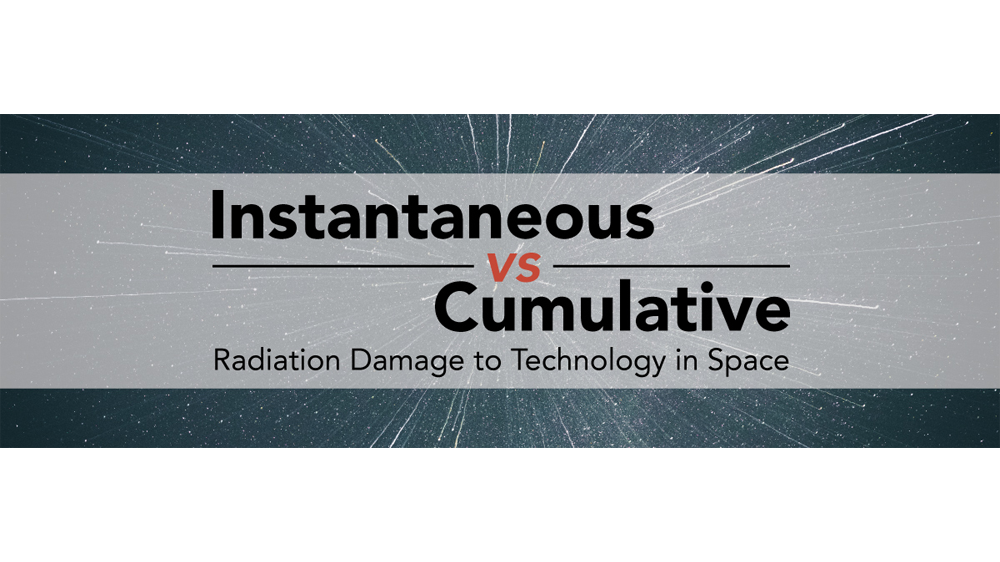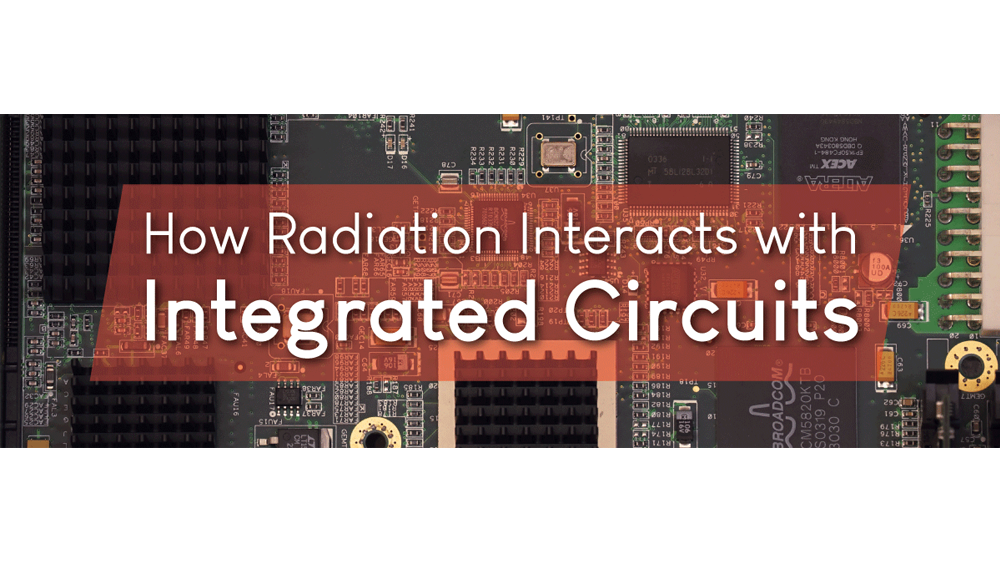
Instantaneous vs Cumulative Radiation Damage to Technology in Space
High radiation doses have the potential to adversely affect electrical devices used in satellites, space probes, rockets, landers and other
A new space economy is emerging, and aerospace companies looking to make a name for themselves must start with strategic plans and successful spacecraft designs from its physical structure right down to the smallest electronic components selected. There are over 2,000 operational satellites in space and that number is growing substantially and quickly.
The space industry is currently going through significant expansion due to commercialization, with the number of satellites in orbit expected to reach 49,000 by 2029. In fact, the new space economy could reach $2.7 trillion by 2050, with the U.S. government and private companies increasing spending for space projects. These satellites will need radiation-qualified designs and suitable electronic components to carry out their missions successfully..
Electrical, electronic, and electro-mechanical (EEE) components and materials for spacecraft must meet specific criteria, and satellite circuit designs have numerous challenges to overcome. Electronic design in satellites must consider high-energy ionizing radiation environments, extreme temperatures, power consumption, size restrictions and vibration tolerance.
Electronics engineers know that designing circuits for aerospace applications is more complicated than doing so for standard electronics. We help PCB designers design systems for the harsh environments of outer space, while minimizing project setbacks and costs.
High quality electronics system designs must be able to tolerate vibration and shock experienced at liftoff as well as critical radiation effects and the extreme temperatures in orbit. Satellite electrical systems can go from below freezing to extreme heat in a short period of time, with temperatures that extend from -55°C to 125°C . These extremes punish the materials, and can lead to decreased functionality or absolute failure.
The initial design of aerospace circuits must take into consideration the essential elements that make up satellite systems. Ultimately, satellites act as relay systems that gather, process and transmit information across large distances, not possible from ground-based systems. The satellite system elements of the sensing package or payload, receiver, transmitter and bus make up a complicated electronically controlled system which has to survive in the harsh environment of space.
In order to operate in space, PCB designs need to meet certain reliability and quality standards. Successfully developing PCBs for satellite technology requires professional insights that consistently produce high quality and reliable satellite products.
A successful electrical design approach for the space industry requires specific PCB layout techniques. These techniques are focused on creating especially robust products. The most stringent standards that engineers must consider include:
Using these unique obstacles as a guide for PCB design, the development process functions to address these challenges and test designs to ensure quality and reliability. For example, high-quality, qualified materials decrease the risk of failure due to vibration or temperature variation. Consequently, aerospace companies should steer clear of substandard components and only use traceable EEE components from reputable vendors. Counterfeit components are a significant challenge within the aerospace industry.
Material selection plays a key role in overcoming the reliability challenges for space missions. Reliability in satellite PCBs has increased with the development of hydrocarbon, ceramic and thermoset polymer composites. Low outgassing is a significant criterion in PCB material selection as well. Outgassing in space results in trapped gasses being released and contamination on surfaces such as PCB material, which leads to problems in the circuit and subsystems.
Radiation-hardened packaging of components acts as additional shielding for multiple circuit boards. Radiation-hardened components come from contract manufacturers who are certified and meet the requirements laid out by AS9100D. These satellite PCBs are put through a series of tests to ensure consistent performance and component reliability.
Some of the key design standards for aerospace electronics include:
To support our partners, RTS offers the following aerospace circuit design services:
Understanding what it takes to deliver successful solutions for the future is nothing new to RTS. Our design and test engineers have helped many customers meet budgets and scheduling timelines while maintaining strict reliability and functionality standards. Always adhering to regulatory standards, RTS understands the bigger picture and long-term vision of our partners, and acts as an expert guide on these highly complicated projects.
Let RTS help you follow the guidelines for electronics and materials design, analog circuits and high-speed digital circuits, and work closely with you to find electrical, optical and thermal solutions that will enable products to perform as needed in the harsh radiation environment of space. Whether you are designing a new satellite system or redeveloping a design, RTS provides the expertise and support you need to achieve your goals.

High radiation doses have the potential to adversely affect electrical devices used in satellites, space probes, rockets, landers and other

In this blogpost, Radiation Test Solutions discusses how satellites are analyzed and qualified for launch through a series of design

In this blogpost, Radiation Test Solutions discusses the difficulties inherent to space radiation environments, their effects on electrical components, and

In this blogpost, Radiation Test Solutions discusses various satellite radiation effects on electronics in orbital service environments. Read on to

In this blogpost, Radiation Test Solutions discusses how radiation interacts with integrated circuits, as well as how to mitigate the